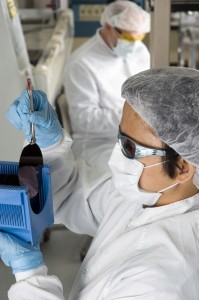Three Part Blog Series: Why Measuring Building Humidity is Important
Throughout this three part blog series, real world scenarios, health & safety concerns, cost savings, mold prevention, and industry best practices for proper humidity sensor selection relating to building humidity levels will be reviewed and analyzed. Part 1 focuses on why monitoring building humidity levels are necessary and what health risks and dangers could come into play when humidity isn't properly measured.
The Importance of Measuring Building Humidity
Having high continuously improving indoor air quality (IAQ) is a high priority for building owners. For indoor air to be considered high quality, it must be properly ventilated, clean air with a relative humidity of between 30 and 60 percent. This range is ideal because it is low enough for occupants to be comfortable, yet there is sufficient humidity in the air to avoid some of the problems associated with dry air.
Low & High Humidity Levels
Studies have shown a statistically significant increase in respiratory infections and absenteeism among occupants of buildings in which humidity isn't controlled adequately. The dryness of the winter season will often cause humidity levels to drop below 30 percent, causing dry eyes, throat, and skin, itching, chapped lips and irritated nasal passages. Low-humidity work environments increases employee susceptibility to colds and other respiratory illnesses. When humidity rises above 60 percent relative humidity (RH), evaporation form surfaces is slow and can result in condensation on windows and ducts, resulting in corrosion and decay on furnishings, carpeting and other building materials. The increased humidity levels also increases the risk of mildew, dust mites, bacteria, and worst of all, mold. These allergans can cause respiratory problems and activate allergies and asthma.
Maintaining Humidity in Various Environments
- Paper Operations: High humidity is an espacially damaging problem in the paper, packaging, and printing industries. Relative humidity above 60 percent can cause paper to expand and curl; the damage of which is irreversible. When moisture-laden, cardboard swells at the periphery, it becomes unsteady and unsafe for stacking. For printers, uncontrolled humidity can mean poor print quality for magazines, brochures, banners, etc.
- Pharmaceutical Manufacturing: Moisture can wreak havoc in pharmaceutical production if it isn't controlled. Trace moisture can be absorbed on the surface of drugs, increasing the rate of decomposition and shortening shelf life. Many pharmaceutical tablets are coated and then dried at a specific relative humidity. Anything above or below that optimum relative humidity level alters drying times, which negatively modifies drug release rates.
- Robots & Paint Spray Booths: Low or high relative humidity can negatively effect industrial manufacturing as well. Robots and other factory-floor capital equipment with sensitive electronic circuits require a constant temperature/humidity environment to work properly. Low relative humidity levels in conjunction with movement of people, carts, forklifts trucks, automated guided vehicles, etc, can cause static discharge. This can be damaging to the unit's electronics if transferred from worker to machine.
- Testing Facilities: At the other extreme, testing facilities requrie an extremely wide temperature and humidity range. A wind tunnel, for example, enables testing at temperatures from -40°C to 66°C and humidity levels from 0 too 100 percent RH. This makes it possible for automakers to test how humidity affects drag on a new production vehicle. Consequently, it is extremely important that the test chamber delivers the specified temperature/humidity combination.
- Museums: Extremes in temperature and humidity can have a harmful effect upon the preservation of artwork and rare documents. High humidity can cause chemicals and acids within artwork to break down and compromise the effectiveness of glue in book binding. Consequently, museums generally keep artwork in a well-ventilated area at a constant temperature and a narrow relative humidity range of 30 to 50 percent RH.
CLICK HERE for The Importance of Measuring Building Humidity Whitepaper Series (Part 1).



